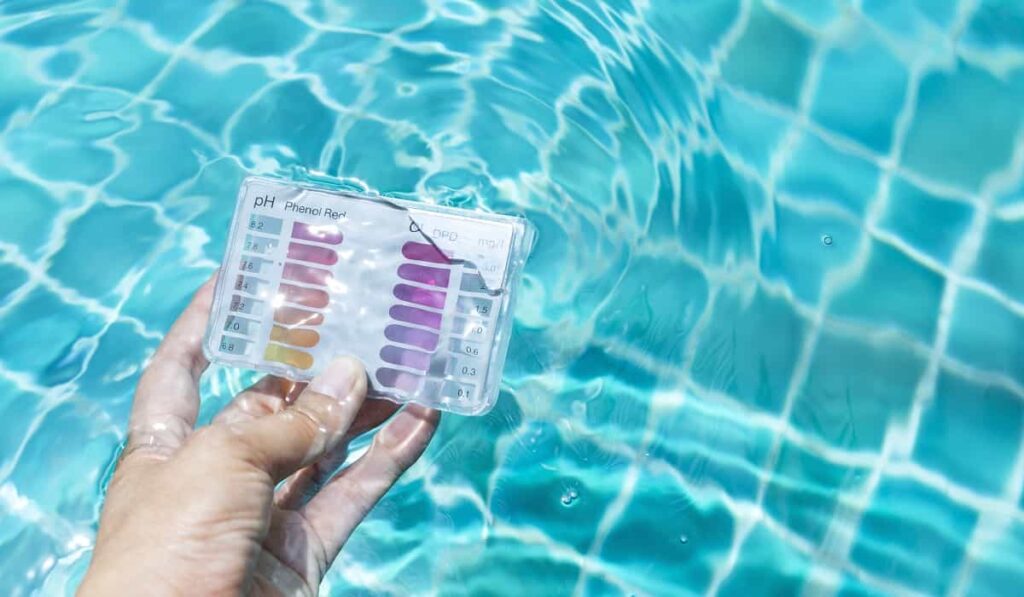When it comes to pool maintenance, it is important to focus on the overall chemical balance of the water. This is necessary to prevent corrosion of the pool and other accessories.
Knowing how to balance the calcium hardness level in your pool is important to prevent unnecessary damage to your equipment. Improper calcium hardness of the water in your pool is not good for the pool itself or for those who use it.
In this post, we will be taking a look at the methods you can use to keep your pool balanced and healthy. Read on if you want to stay on top of maintenance and keep the pool as fun as it is supposed to be.
What is Calcium Hardness Level in Your Pool?
To know how to balance the calcium hardness of the water in your pool, you first need to know what it is. It is always good to stay up to date with the newest technologies that are used to keep your pool healthy and fun.
Measuring calcium hardness determines how hard or soft the water in your pool is and is a measurement of total calcium and magnesium. Simply put, the total dissolved calcium and magnesium in the water will tell you how hard or soft the water is.
A well-balanced pool will have a measure of between 155 and 400 parts per million of the aforementioned minerals in the water.
When the Calcium Hardness Level is too Low
If the calcium hardness of the water in your pool measures lower than 150ppm, it will cause the water to corrode the pool. This includes the eroding of anything from the tile grout to the lamination on the surface of the tiles in your pool.
The damage done by too soft water is irreversible, and the parts that are eroded will have to be replaced or resurfaced. That is why it is so important that you do not allow the water of your pool to become too soft.
If the Calcium Hardness Level is too High
With a high calcium level in your pool, the water will become basic, which means the pH level is high. The water will become oversaturated, causing the water to become cloudy over time.
This will cause the water to scale in and around the pool, as well as around the equipment in the pool. This will block the water flow in and out of the pool while clogging and eventually damaging the pool equipment.
The calcium buildup on the sides of the pool may look harmless, but it can cause damage to your pool in the long run.
How to Fix the Calcium Hardness in Your Pool
If you find that the calcium hardness in your pool is not properly balanced anymore, you need to fix it quickly. There are not many ways you can do this, but we will show you how to get it balanced again.
When the Level is too Low
If you find the calcium hardness balance in your pool to be too low, there is a way you can fix this. The best or most common thing you can do is add calcium chloride to the pool to act as a hardness increaser.
When the Level is too High
For pools in which the calcium hardness is too high, the only solution here is to drain at least half of the water. This way, you can add fresh water to the pool and then build the calcium hardness up to the desired level.
Another way to get the calcium hardness level balanced is by using a pool clarifier. This is a chemical mixture that combines the small parts of calcium to make them larger so that they can be picked up by the filter system.
This is an easy method and involves only a little bit of work from your side, but it requires some patience for the chemical to work. This is also a great way to get your pool balanced again, especially when the water has just started to become cloudy.
Finally, there is the option to use a flocculant known as floc, which does the same work as a clarifier but quicker. This causes the particles to sink to the bottom of the pool until you can extract them.
How to Keep the Calcium Hardness Level Balanced
To keep the calcium hardness level balanced in your pool, you need to keep the pH level well-balanced. If the pH level in your pool is properly maintained, it will help keep the calcium levels from becoming too high.
To keep your pool healthy and safe, you need to keep the overall water chemistry balanced. Also, to keep the pool healthy and balanced, you need to take regular measurements of the water to know what is in it.
To keep the calcium hardness from going too high, you must prevent calcium from building up. This can be done by keeping the pH level of the pool at a healthy 7.4 to 7.6 level.
What is the Right Level of Calcium Hardness for Your Pool?
The perfect level of calcium hardness in the water of your pool needs to be determined by the type of pool you have.
Plaster or Concrete Pool
For a plaster or concrete spool, it is best to keep the calcium hardness of your pool between 200 and 275 parts per million.
Fiberglass or Vinyl Pool
A fiberglass or vinyl pool needs to have a calcium hardness of 175 to 225 parts per million for it to be at a perfect level.
Final Words
Always get advice from expert pool companies before you try any of the methods mentioned here. This way, you can get the right chemicals to get the job done in the least amount of time. The right product will also help get the job done with the least amount of damage to your pool and equipment.

